A large medallion for a large milestone
Unknown South Land
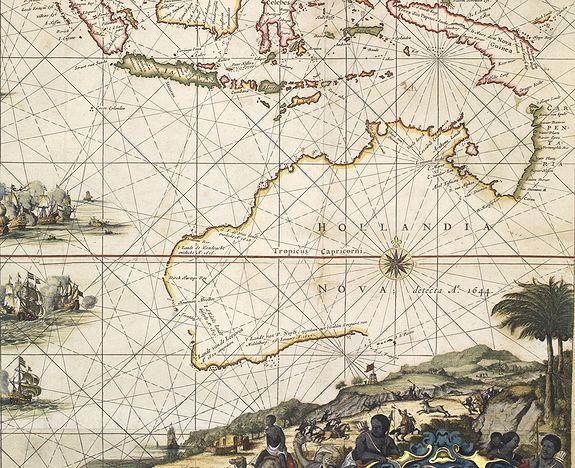
(Early Dutch map of Australia (Hollandia Nova) showing much of the west and north of the country. Map from Swaen.com)
Aboriginal people are known to have occupied mainland Australia for at least 65,000 years. It is widely accepted that this predates the modern human settlement of Europe and the Americas. The first documented landing in Australia by a European was in 1606. The Dutch explorer Willem Janszoon landed on the western side of Cape York Peninsula and charted about 300 km of coastline. Cape York is at the very top of Queensland, on the North-East coast of Australia. Europeans had long believed there was a land mass in the southern hemisphere which they called Terra Australia Incognita, meaning Unknown South Land.
Ten-years later, came the event which this PNC commemorates, the arrival of Dirk Hartog to Western Australia.
Obverse
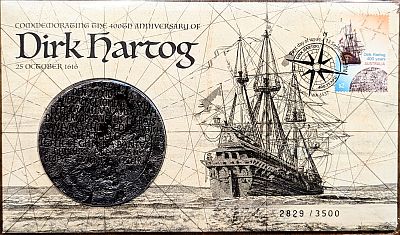
The PNC is cream with a large grey – silver medallion on the left. Above the medallion, the title information “Commemorating the 400th anniversary of Dirk Hartog, 25 October 1616”.
The stamp contains a painting of Dirk Hartog’s ship, the Eendracht by Western Australian Adriaan de Jong. It is based on early 17th-century Dutch paintings and documents. The ship is recreated on the envelope itself in black and white.
One thing medallion PNCs have which regular coin PNCs often do not, is an individual number. This is #2,829 of 3,500.
Reverse
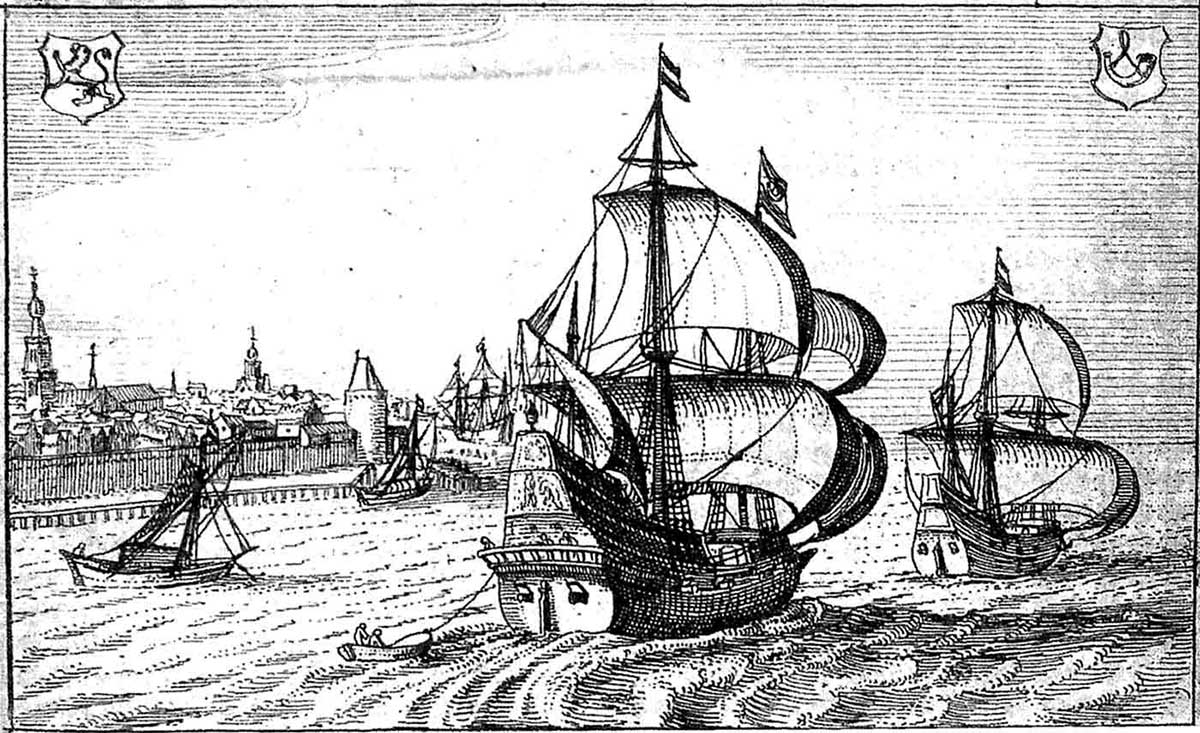
The reverse of the PNC really only has the text (below) and the back of the medallion (further down). So instead, here is an image of the Eendracht and the Hoorn leaving the port of Hoorn, Netherlands, from nma.gov.au.
The reverse contains information about the subject:
“On 25 October 1616, Captain Dirk Hartog (1580-1621) of the Dutch East India Company ship, the Eendracht, landed on an island off the coast of Shark Bay, Western Australia. This was the first European expedition to visit Australia’s western coast and the second to arrive on the continent. Two days later, before leaving what is now called Dirk Hartog Island, Hartog left a pewter dish inscribed with an account of his visit fixed to a wooden post at a location now called Cape Inscription. In 1697, another Dutch expedition led by Willem de Vlamingh discovered the dish and returned it to Amsterdam, where it remains, in the Rijksmuseum. The corroded 36.5 cm-diameter dish is the oldest known artefact from Australia’s European history. An English translation of the Dutch inscription reads:1616 On 25 October arrived here the ship Eendracht, of Amsterdam: the upper merchant, Gilles Miebais of Liege, Captain Dirch Hatichs of Amsterdam; on 27 d[itt]o. set sail for Bantam; undermerchant Jan Stins, upper steersman Pieter Doores of Bil. In the year 1616.”
Stamp design: Sharon Rodziewicz, Australia Post Design Studio
Pack design: Sport Entertainment Products
Stamp, pack and medallion images: Adriaan de Jong (Eendracht illustration); Hessel Gerritsz, Chart of the Malay Archipelago, 1618, nla.obj-231306238 (stamp map); Rijksmuseum, Amsterdam (plate).
Medallion obverse
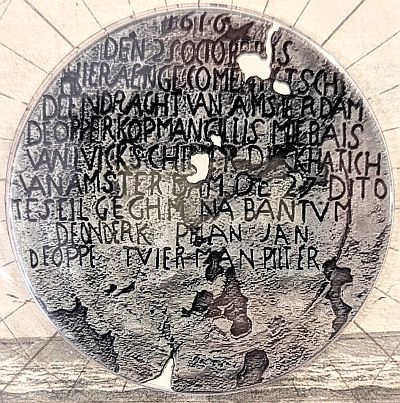
The medallion is a replica of a pewter plate Hartog left nailed to a wooden post on the island which now bears his name. The medallion features holes and cracks, like the original, and the text:
1616 DEN 25 OCTOBER IS HIER AEN GECOMEN HET SCHIP D’EENDRAGHT VAN AMSTERDAM DE OPPERKOPMAN GILLIS MIBAIS VAN LVICK SCHIPPER DIRCK HATICHS VAN AMSTERDAM DE 27 DITO TE SEIL GEGHM NA BANTVM DE ONDERKOPMAN JAN STINS DE OPPERSTVIERMAN PIETER DOOKES VAN BIL ANNO 1616
Translation: ‘1616 THE 25 OCTOBER IS HERE ARRIVED THE SHIP EENDRAGHT OF AMSTERDAM THE UPPERMERCHANT GILLIS MIEBAIS OF LIEGE SKIPPER DIRCK HATICHS OF AMSTERDAM. THE 27 DITTO (we) SET SAIL FOR BANTAM THE UNDERMERCHANT JAN STINS, THE FIRST MATE PIETER DOOKES VAN BIL. ANNO 1616’
From Museum.wa.gov.au
Medallion reverse

The reverse of the medallion appears as an inverted copy of the front of the plate (On coins, this is known as “Bracteate“). The PNC is sitting flat in this photo so the holes are dark.
Stamp
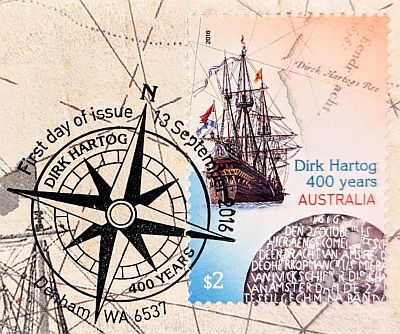
The stamp contains the Eendracht and the pewter plate. The PNC is stamped First day of issue 13 September 2016, Denham WA 6537 with a compass style cancellation mark. The painting of the Eendracht on the stamp is by Western Australian Adriaan de Jong and is based on early 17th-century Dutch paintings and documents.


Leave a Reply